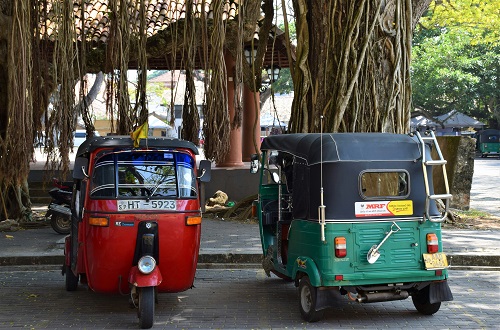Tuk Tuk Transportation Service

Type: Transportation
Key product/s for sale: Transportation services using tuk-tuks for passengers and light cargo.
Technology considerations: Basic maintenance tools, and GPS navigation for efficient route planning.
Market for the product/s: Urban areas with high population density and busy market centers.
Key inputs into the business: Tuk-tuk vehicles (Piaggio, Bajaj, Haojin, Dayun), tuk-tuk driving course, driver’s license, and third-party insurance.
Product preparation process: Ensuring tuk-tuk vehicles are well-maintained and roadworthy for safe transportation services.
Quality considerations: Providing reliable and safe transportation services, maintaining cleanliness and comfort in tuk-tuk vehicles.
Cost of investment:
- Tuk tuk price: Ksh 450,000
- Tuk-tuk driving course: Ksh 8,000
- Driver license: Ksh 1,500 for 3 years
Total: Ksh 459,500.
Required operational infrastructure: Parking space/storage for tuk-tuks, basic maintenance tools, and equipment.
Most suitable or viable location of the business: Busy areas like towns, market centers, and near residential areas with high foot traffic.
Potential sources of investment capital: Personal savings, loans from financial institutions, partnerships, or investors.
Requirements for effective management: Efficient scheduling of tuk-tuk routes and drivers, monitoring of vehicle maintenance, and customer service management.
Role of mobile phone and ICT in the business: Utilizing mobile phones for communication with drivers and customers, and GPS navigation for efficient route planning.
Statutory regulations and licenses: Obtaining business licenses and permits from relevant authorities, and compliance with regulations set by transportation authorities.
Pricing: Competitive pricing based on distance traveled and market demand.
Profitability: Estimated daily profits range from Ksh 1,500 to Ksh 3,000, with potential for additional income if hiring drivers.
Next steps: Secure necessary licenses and permits, finalize tuk-tuk procurement, hire and train drivers, implement marketing strategies, and monitor performance to ensure profitability and growth. Additionally, addresses challenges such as competition, demand fluctuations, and driver reliability to maximize profits.

